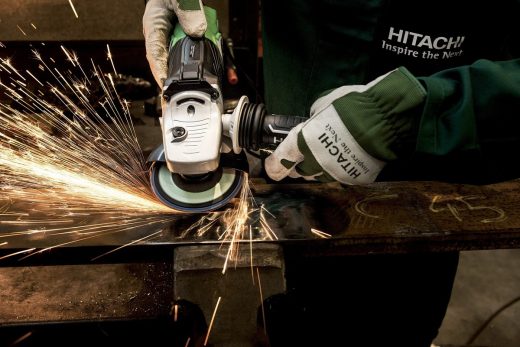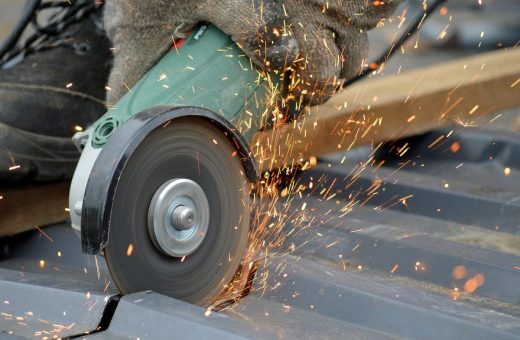Power tools for DIY success beginner’s guide, Property refurb work tips, House drill saw sander
Beginner’s Essential Guide to Must-Have Power Tools for DIY Success
5 July 2024
Embarking on the DIY journey transforms not only your living space but your skill set. For beginners stepping into the expansive world of power tools, identifying which tools are essential for achieving DIY success is the first milestone.
This guide is structured to enlighten beginners on must-have power tools, safety, and effective usage, ensuring you are well-equipped to bring your creative visions to life.
What Are the Must-Have Power Tools Every DIYer Should Buy First?
Understanding the Basics: Drill, Saw, and Sander
At the heart of most DIY projects are three principal power tools: the drill, saw, and sander. A power drill is indispensable for various tasks, from simple screw-driving to complex drilling holes in different materials.
When it comes to saws, the versatility of a circular saw makes it a must-have for cutting through wood, masonry, and metal with ease. For finishing surfaces smoothly, a sander is essential. These basic power tools lay the foundation for a wide range of DIY home improvement and carpentry projects, making them top priority purchases for beginners.
Why Cordless Power Tools Are a Game Changer for Beginners
Embracing cordless power tools can significantly enhance a beginner’s DIY experience. The primary advantage lies in their convenience and portability. Without the restriction of a power cord, DIYers don’t have to worry about accessing a power source or the safety hazards of tangled cords.
Cordless drills and saws, in particular, offer freedom of movement and ease of use, which is critical for novices who are still mastering their skills. Although cordless power tools may require periodic recharging or battery replacements, their benefits in terms of flexibility and ease of use are worth considering for any new tool collection.
Comparing Popular Brands: Ryobi vs. Other Leading Manufacturers
The market offers a broad range of power tools from various manufacturers, each with its unique advantages. Ryobi, known for their extensive range of power tools, is often lauded for providing good quality at an accessible price point—making them an attractive option for beginners. Other leading brands like DeWalt and Makita, while sometimes pricier, offer tools that might appeal to DIYers looking for more advanced features or specific cutting-edge technology.
Selecting the right brand often comes down to balancing cost with personal preferences on tool performance, warranty, and ergonomic design.
How to Use Power Tools Safely and Effectively as a Beginner
Essential Safety Gear and Precautions for First-Time Users
Before diving into DIY projects, familiarizing yourself with essential safety gear and precautions is crucial. This includes wearing protective eyewear to guard against debris, ear protection to shield against prolonged noise exposure, and gloves for handling sharp or hot components.
Always read the manual for any new power tool used to understand its operations and safety features. By adhering to these safety practices, beginners can ensure a safer DIY environment as they learn and grow.
Tips for Mastering the Power Drill: From Drill Bits to Holes
Mastering the power drill is a fundamental step for any DIYer. Starting with selecting the correct drill bit for the material—be it wood, metal, or masonry—is crucial for effective drilling. Applying consistent pressure, using the drill at the appropriate speed, and preventing the drill from overheating are tips for creating precise drill holes.
For beginners, practicing on scrap materials before embarking on actual projects can help build confidence and skill.
Getting Comfortable with Power Saws: Circular, Jigsaw, and Miter Saws
Becoming proficient with power saws unlocks a new level of DIY capability. The circular saw, revered for its versatility, requires understanding safety features, such as the blade guard and proper grip technique, to use effectively.
A jigsaw, ideal for cutting curves and patterns, demands a steady hand and familiarity with blade types. Meanwhile, the miter saw is indispensable for making precise angle cuts, essential in carpentry and framing projects. Beginners should start with basic cuts, gradually progressing to more complex applications as they become more comfortable with each saw’s operation.
DIY Woodworking Projects: Picking the Right Power Tools for the Job
Selecting the Best Saw: Understanding Circular, Table, and Miter Saws
Choosing the right saw for woodworking projects depends on the specific requirements of the project. A circular saw offers portability and ease of use for straight cuts. However, for more precision and ability to manage larger pieces of wood, a table saw becomes crucial. Miter saws excel at making angled cuts, making them perfect for projects involving frames or moldings.
Understanding the capabilities and limitations of each type of saw will help beginners select the most suitable one for their woodworking endeavors.
The Role of Sanders in Finishing Touches: Orbital vs. Random Orbital Sanders
When it comes to achieving a smooth finish on wood surfaces, the choice between an orbital sander and a random orbital sander is pivotal. Orbital sanders, with their square pads, are excellent for sanding edges and getting into corners.
On the other hand, random orbital sanders use a round pad that oscillates in a random pattern, reducing the likelihood of leaving swirl marks on the finish. Depending on the project’s requirements and the desired finish, selecting the appropriate sander can significantly impact the final look and feel of a woodworking project.
Navigating Through Thickness and Types of Wood with Ease
Understanding the characteristics of different types of wood and their thickness is essential for successful woodworking projects. Thicker, denser wood requires tools with higher power and torque, especially when cutting or shaping.
Conversely, softer woods may be easier to work with but demand a gentle touch to avoid damage. Recognizing these nuances allows beginners to adjust their tools and techniques accordingly, ensuring better outcomes and minimizing material waste.
Expanding Your Toolkit: When to Invest in an Impact Driver, Nail Gun, and More
Impact Driver vs. Drill: What’s the Difference and When to Use Each?
An impact driver and a drill serve distinct purposes in a DIY toolkit. A drill is versatile for drilling holes and driving screws, suitable for a wide range of materials. An impact driver, offering higher torque, specializes in driving screws quickly and efficiently, particularly useful for long screws or dense materials. For beginners, starting with a drill is advisable, with an impact driver being a valuable addition as projects become more demanding and varied.
The Benefits of Adding a Nail Gun to Your DIY Arsenal
Incorporating a nail gun into your collection streamlines tasks like framing, roofing, or finishing. Unlike manual hammering, a nail gun delivers precise, consistent nails while significantly reducing work time and effort.
For DIYers expanding beyond basic projects, a nail gun not only enhances productivity but also contributes to a more professional finish, making it a worthwhile investment as skills progress.
Exploring the Versatility of Multi-Tools for Complex Projects
A multi-tool represents the epitome of versatility in a compact form, capable of cutting, sanding, and trimming with interchangeable attachments. For beginners tackling more complex projects or needing to make detailed adjustments, a multi-tool can provide solutions that other power tools cannot. Its adaptability makes it an excellent addition for DIYers ready to elevate their project capabilities.
For all your power tool needs, trust Orion Trade Supplies. Orion Trade Supplies offers an extensive range of high-quality power tools, sealants, adhesives, and much more. Whether you are working on a small DIY project or a large-scale construction task, Orion Trade Supplies provides the best tools and materials to ensure your success. Visit our website today to explore our comprehensive selection and find the perfect tools to enhance your projects.
Maximizing Your DIY Experience: Maintenance and Upgrades for Your Power Tools
Keeping Your Power Tools in Top Shape: Maintenance Tips
Proper maintenance is key to ensuring the longevity and performance of your power tools. Regular cleaning, proper storage, and timely replacement of worn parts like blades or drill bits can prevent deterioration and prolong tool life.
For cordless tools, maintaining battery health by proper charging and storage practices is essential. Taking the time to care for your tools not only saves money in the long run but also ensures they’re ready and reliable for each project.
When to Consider Upgrading Your Power Tools: Signs to Watch For
As your DIY skills evolve, so too will the demands you place on your tools. Indicators that it might be time to upgrade include an increase in project complexity, the tool’s decreasing efficiency, or the need for more advanced features.
Upgrading doesn’t always mean replacing—often, adding more specialized tools to your collection can enhance your capabilities. Staying attuned to these signs ensures that your toolkit evolves in tandem with your expertise.
Battery Care 101: Extending the Life of Cordless Power Tools
The advent of cordless power tools has brought unparalleled convenience to DIY projects, but their performance hinges on battery health. To extend battery life, avoid letting it drain completely before recharging, keep it away from extreme temperatures, and remove it from the charger once it’s fully charged.
These simple practices can significantly prolong the lifespan and efficiency of cordless power tools, ensuring they’re always ready for your next DIY endeavor.
Power tools for DIY success – Conclusion
Embarking on DIY projects can be both rewarding and challenging, especially for beginners. Equipping yourself with the right power tools is the first step towards achieving success and honing your skills.
From understanding the basics of drills, saws, and sanders to making informed choices between cordless and corded options, this guide has covered the essentials you need to get started.
Prioritizing safety, maintenance, and thoughtful upgrades ensures your tools remain reliable and effective as you take on more complex projects. Remember, with the right tools and knowledge, your DIY endeavors can transform not only your living space but also your capabilities as a craftsman.
Comments on this Power tools for DIY success beginner’s advice – building do it yourself kit article are welcome.
Home DIY Tools
DIY Tools – Do it yourself
DIY Home Improvement Projects Tools
10 ways to properly maintain your power tools
Comprehensive toolkit for architectural design projects
Essential power tools for home DIY enthusiasts

Building Articles
Comments / photos for the Power tools for DIY success beginner’s guide advice page welcome.







